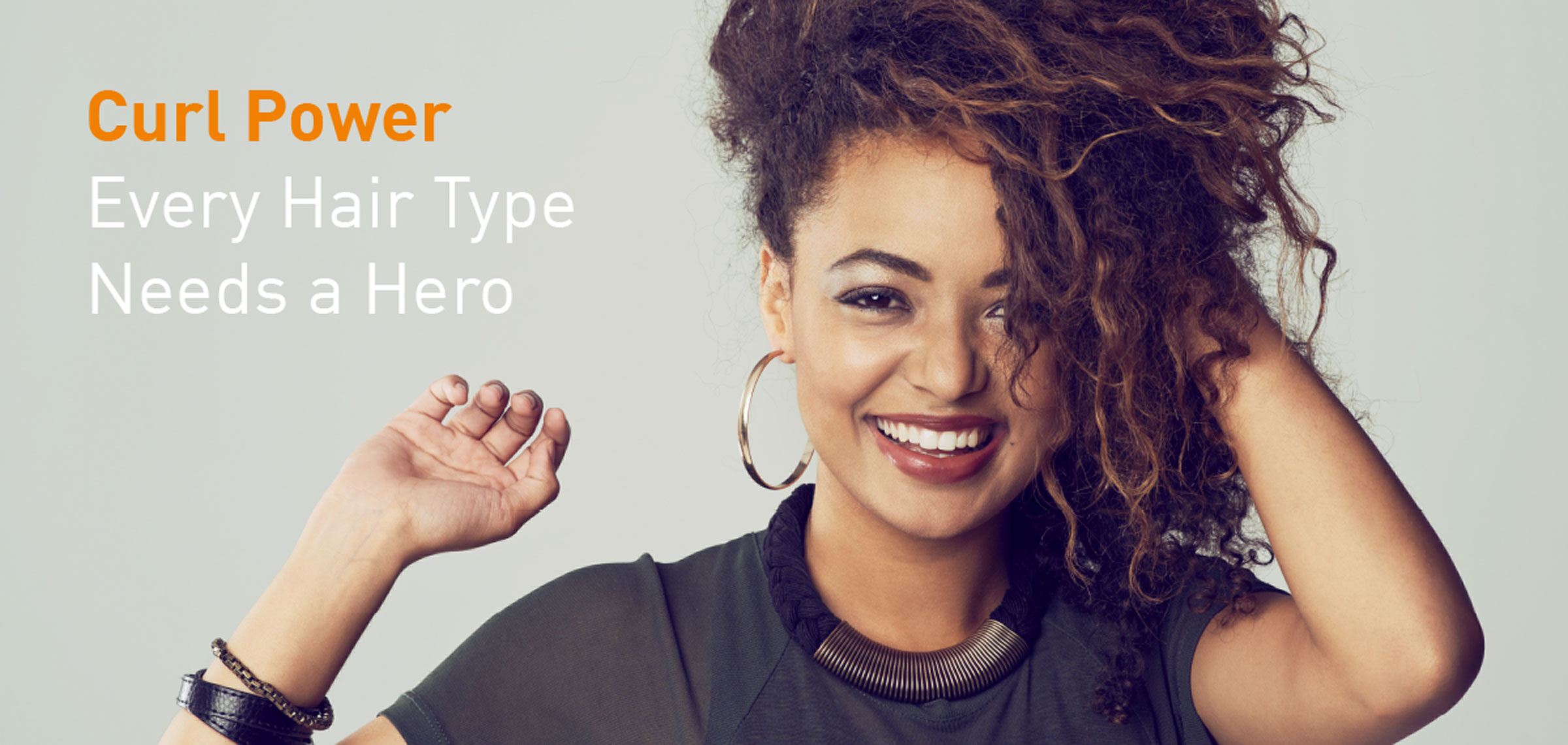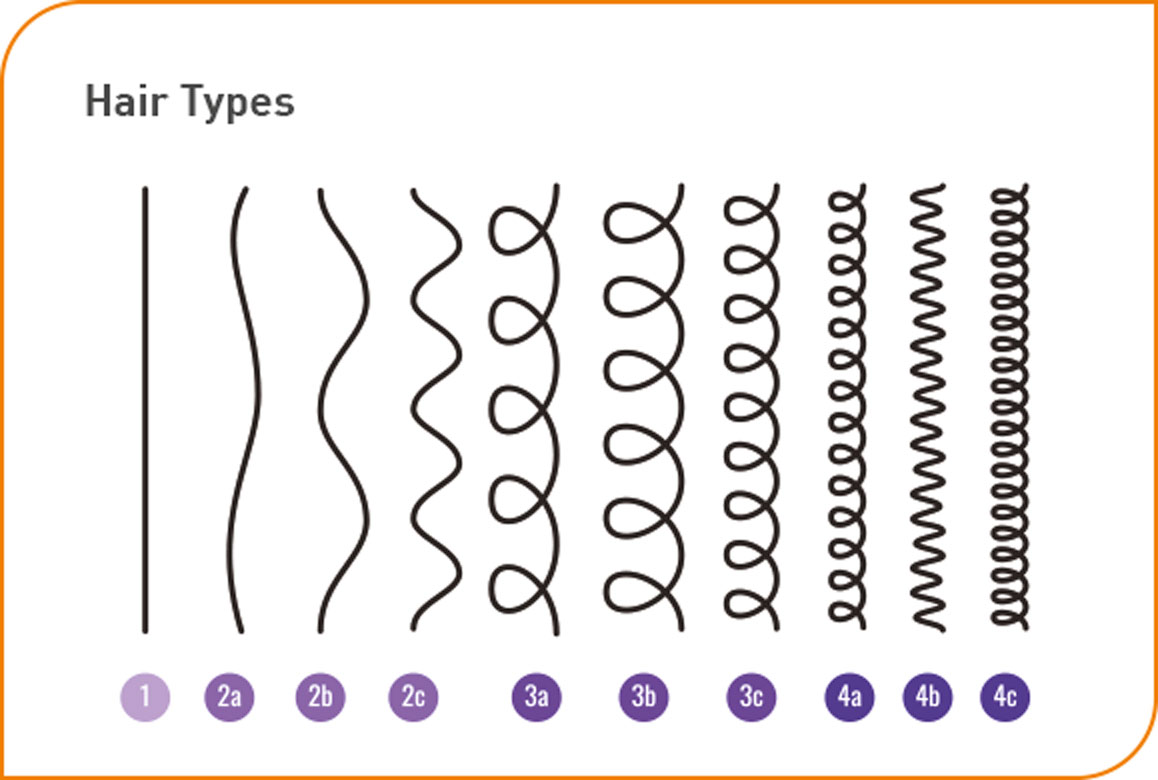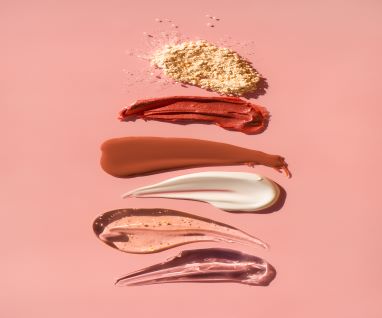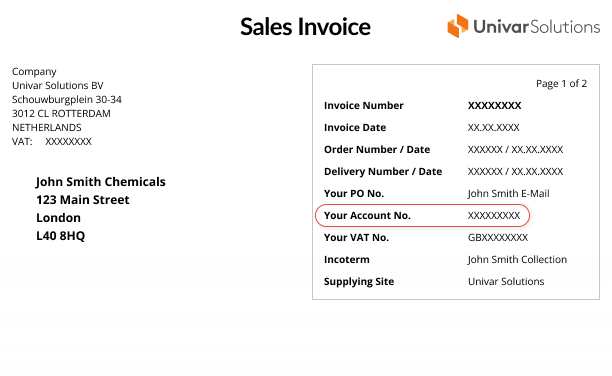We’re here to provide you with more information or help answer any questions you might have. Send us a note and we’ll get back to you as soon as possible.


Why do we typically see claims “for dry and damaged hair” on curly haircare product labels? While curly and textured hair may need an extra touch of care to invigorate health and vitality, the same maintenance is needed for all hair types. Now is the time to valorise curly and textured hair types, to understand their needs and to tell consumers that we’ve got the right products and formulations to embrace their natural hair look.
It's time for brands to customize solutions that help sustain consumers' diverse hair textures and empower them with more choices that nourish non-straight hair types.
Straight hair is not the norm...
Getting to know the different hair types
Over the last year, we have seen more influencers on social media showing off their amazing curly hair, and not because they’ve spent hours styling straight hair. A cultural shift toward celebrating our natural hair textures is changing beauty norms around hair types. After years of trying to straighten natural curls, consumers have finally found the right products and routine to let their curls live their best lives.
In hair care, there is no one-size-fits-all model. Our routines are personal, unique to our needs and based on our own style and the natural texture and growth of our hair type. Still, few consumers today know how to categorize their hair type, which is key information when choosing the right products to maintain their tresses, whether curly or straight. Hair types can be classified into different categories, as represented by the illustration in Figure 1 showing their variety.
Hair type 1 is straight hair, types 2 are wavy, 3 are curly and 4 are coily. According to research from Mintel, the majority of adults in the U.S. have a non-straight (types 2/3/4) hair types. Hair texture is also important to understand, ranging from fine to medium or coarse, which will also impact the choice of haircare products.


Figure 1: Categories by hair type
There is a desire from consumers to be informed and to educate themselves on their hair types and texture to understand and better choose their haircare products. They are monitoring their hair health more, and this is leading them to try natural hairstyles and seek relevant products (Minteliv).
When speaking about hair type and texture, porosity is another term that starts to pop up in searchs for haircare products. Hair porosity is the ability of the hair to absorb and retain moisture. According to Spateii, consumers’ online searches for “low porosity hair” have grown +38.8% year-over-year and this information trend is expected to continue to grow in the next 12 months. Certain hair types, like curly hair, may be impacted by porosity more than others due to a lack of moisture. Consumers don’t understand the issues behind frizz, and many are not aware of the impact that porosity (high or low) can have on their hair and on product absorption, types of ingredients, etc. Brands can thus target products to consumers who better understand porosity and what their hair needs, says Minteliii.
It is now in the brands’ hands to show that they are listening and understand
their consumers and as a result, expand their product lines to address
all hair types and textures.
Diversity in hair care, expanding the offering
First seen in skin care, there is now a need to extend the haircare offering to target all hair types and textures.Every type of hair requires a different haircare solution, which will impact the formula of the product and the format: from a nourishing oil to a light milk for instance. Keeping all that in mind, there is a gap in the market for textured hair products and an opportunity for brands to diversify their ranges. In the UK, 32% of adults agree that there are not enough mainstream haircare brands for people with textured hair, according to data compiled by Mintelv. Beyond the products themselves, there is an opportunity for brands to educate and explain why certain formulas are specifically designed for certain types of hair, and to communicate the special benefits of their ingredients.
Advertising and marketing also need to align around better representation in imagery and show models with different hair types, such as in Dove’s Love Your Curls campaign.
In the haircare professional space, we are starting to see a shift as well. More and more hair salons and hairdressers are now specializing in curly and textured hair, with knowledge on how to take care of, cut and style them, which was not as common a few years ago. Every hair type used to be treated the same way, and it was more difficult for those with textured hair to find the right professionals to cater to their specific haircare needs.
Ingredient selection, the key to meeting consumer expectations
First seen in skin care, there is now a need to extend the haircare offering to target all hair types and textures.Every type of hair requires a different haircare solution, which will impact the formula of the product and the format: from a nourishing oil to a light milk for instance. Keeping all that in mind, there is a gap in the market for textured hair products and an opportunity for brands to diversify their ranges. In the UK, 32% of adults agree that there are not enough mainstream haircare brands for people with textured hair, according to data compiled by Mintelv. Beyond the products themselves, there is an opportunity for brands to educate and explain why certain formulas are specifically designed for certain types of hair, and to communicate the special benefits of their ingredients.
HydroxySHIELD™ Polymer can be used in specific wavy, curly and coily hair products. Very versatile, this polymer innovation from Dow goes beyond protection and offers multifunctional benefits at low level (1%). By improving the hair alignment, it gives a healthy appearance, which is what consumers are looking for, today: a natural and healthy hair look. HydroxySHIELD™ Polymer can also reduce the coefficient of friction and enhance combing, as shown on the graph in Figure 2. A powerful conditioning agent, this product may be used in a variety of product applications such as shampoos, rinse-off conditioners, leave-in treatment and styling sprays and creams.
Ingredient selection, the key to meeting consumer expectations
Sulfate-free shampoo






Figure 2: Benefits of Dow’s polymer innovation, HydroxySHIELD™
UCARE™ Extreme Polymer
This is also a good material to consider when formulating for curly and textured hair. A cationic cellulosic polymer, this product contains a more hydrophobic backbone (compared to traditional UCARE™ polymer range) offering unique performance benefits. It is bio-derived (>50% bio-derived content), derived from non-GMO wood pulp certified by the Programme for the Endorsement of Forest Certification (PEFC). It can be used as the principal conditioning agent or in combination with silicones or natural oils; in rinse-off products it can be as efficient as some silicones.
For formulators, UCARE™ Extreme Polymer can be used at a low level, has a good compatibility with surfactants and allows versatility in product formats. For consumers, it offers no compromise on performance with high conditioning benefits. In leave-in conditioners it also provides natural soft styling (curl retention). According to the test results shown in Figure 3, most consumers with curly hair found that UCARE™ Extreme Polymer provides hair alignment, anti-frizz effect and curl definition on dry hair.
“Salon” test - Consumers’ impression
• A majority of consumers with straight hair finds that UCARE™ Extreme Polymer provides smoothness (statistical difference), ease of combing, hair alignment, shine, anti-frizz effect and overall conditioning on wet hair.
• A majority of consumers with curly hair finds that UCARE™ Extreme Polymer provides hair alignment, anti-frizz effect and curl definition on dry hair.


Figure 3: Positive results from testing UCARE™ Extreme Polymer on curly hair




Control Curl Cream, Hold Styling Gel
Textured hair - after 5 days
Treatment: panelist with hair type 2C/3B washed and conditioned hair, applied cream and gel to damp hair. Panelist was able to use less MaizeCare™ Style Gel to achieve hold compared to the gel without MaizeCare™ Style Polymer. Hair was allowed to dry for 24 hours.
Left: Curl Cream and Styling Gel formulations without MaizeCare™ Style Gel Polymer.
Right: CONTROL Curl Cream and HOLD Styling Gel with 2% MaizeCare™ Style Polymer.
After 5 days Panelist comments: More frizz and less curl definition when using Control products without MaizeCare™ Style Polymer.
MaizeCare™ Style Polymer
Styling products are also crucial when discussing textured hair care. With MaizeCare™ Style Polymer from Dow, you have a natural styling ingredient which offers curl definitions for textured hair. This non-GMO bio-based polymer derived from corn allows flexibility in hair styling – from stiff hold to subtle definition – and textures from waxes to sprays. Issued from our STYLED kit, our CONTROL Curl Cream and HOLD Styling Gel formulated with MaizeCare™ Style Polymer show great efficacy on textured hair. After 5 days, panellist reported more frizz and less curl definitions when using the control products without MaizeCare™ Style Polymer.


Figure 4: Test results of hair care routine with MaizeCare™ Style Polymer on textured hair


Keep it clean, natural and sustainable
Clean, eco-friendly and natural beauty products are a here to stay. In EMEA, Mintel reportsvii that eco/natural claims are above average and rising. In the Americas, eco-consciousness and naturalness is a must, inspiring solid, concentrated and minimal ingredients for new product development. During the COVID-19 outbreak, we saw an acceleration of the at-home personal care movement toward natural hair styles. Using familiar better-for-you ingredients such as avocado oil, coconut oil, argan oil or tea tree oil that promote long-term hair health can be a good way to leverage this shift in focusviii. Integrating natural ingredients into formulated products can also encourage consumers to try the product, especially those looking for an easy solution. According to Mintelix, coconut oil is still the most used alternative haircare product among Black consumers in the U.S. (42%).
There is increasing demand from consumers to have a wider offering of haircare products to tend and nourish textured hair, including those made with more natural ingredients and eco-conscious formulas.
At Univar Solutions, we are here to support you in the formulation of your next haircare product line. Discover our latest ingredient solutions for hair cleansing and our high-performing and bio-based hair conditioners for all hair types and textures.
There are vast pressures in the hair care space, to give the consumer the desired highly efficient results, according to Mintelvi. Looking at the variety of ingredients available for the haircare segment, it can be hard to make a choice.
By selecting specialty ingredients with high conditioning performance and styling benefits, you have a good starting point to build a new line of haircare products specially designed for textured hair. And if those ingredients allow you formulation flexibility, even better! You can diversify the formats to offer real personalized solutions to consumers.


Sources
i Gap in market for textured hair products and guidance, 2020 - Mintel
ii Spate.com
iii The Future of Haircare, Styling & Colour: 2021 - Mintel
iv Gap in market for textured hair products and guidance, 2020 - Mintel
v Gap in market for textured hair products and guidance, 2020 - Mintel
vi A year of innovation in haircare, styling & colour, 2021 - Mintel
vii The Future of Haircare, Styling & Colour: 2021 - Mintel
viii The Future of Haircare, Styling & Colour: 2021 - Mintel
ix Gap in market for textured hair products and guidance, 2020 - Mintel





